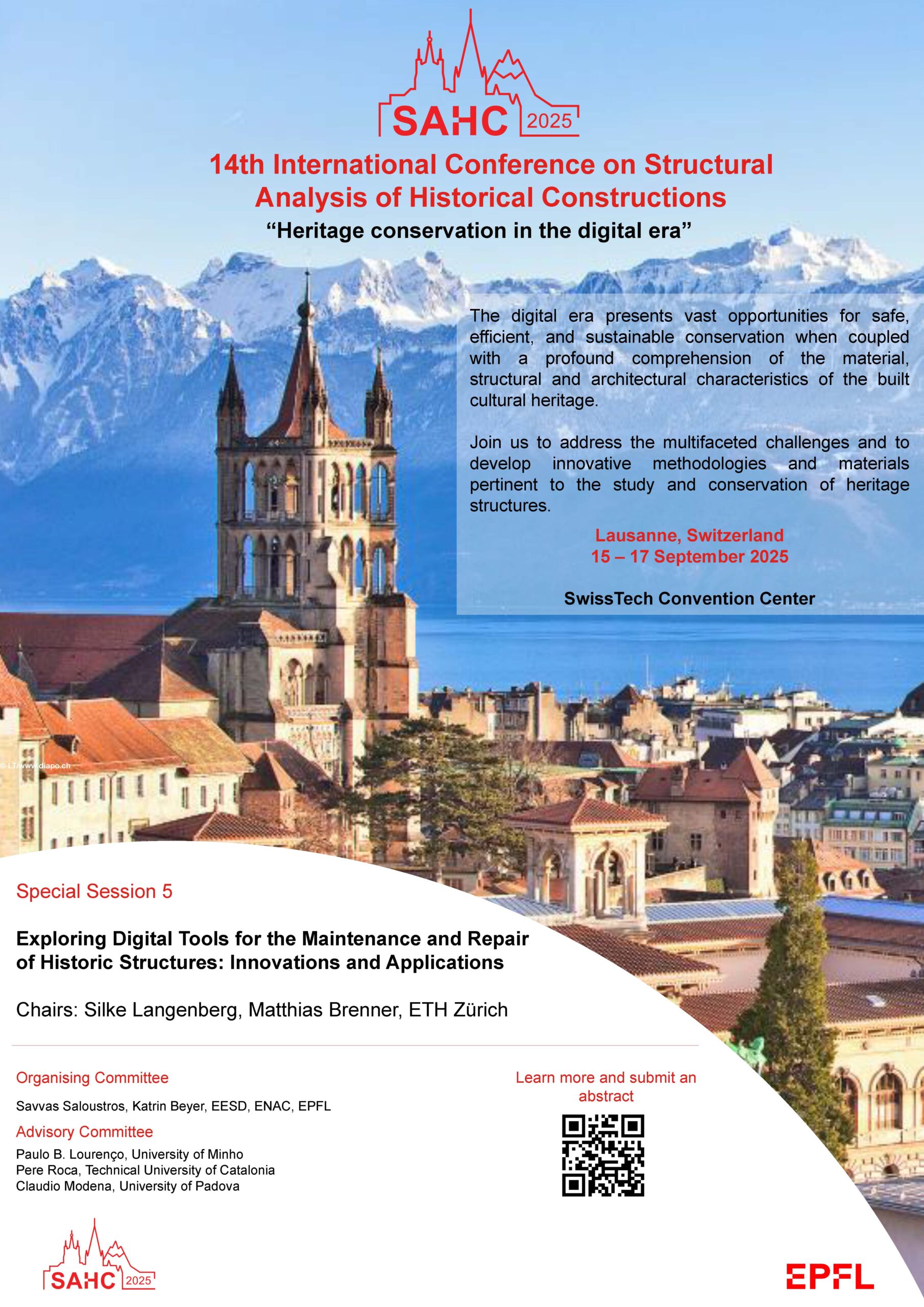
The theme of SAHC 2025 is “Heritage conservation in the digital era“, which emphasizes the vast opportunities of the digital era for safe, efficient, and sustainable conservation when coupled with a profound comprehension of the material, structural and architectural characteristics of the built cultural heritage. Since, its first edition in 1995 in Barcelona, the SAHC conference has been established as the top event that brings together researchers and practitioners working in all fields related to the structural analysis of historical structures.
The conference will take place between the 15th and 17th of September 2025 at the SwissTech Convention Center, located at the EPFL campus, 10 minutes from the city of Lausanne.
Submission deadline (extension): October 20, 2024.
Special Session 5: “Exploring Digital Tools for the Maintenance and Repair of Historic Structures: Innovations and Applications”
Session Chairs: Silke Langenberg, Matthias Brenner
This session presents a dynamic exploration of the transformative potential of digital tools and processes in the maintenance and repair of historic structures, navigating the intersection of heritage preservation, technological innovation, and sustainable conservation practices. In the field of heritage conservation, the integration of digital tools has revolutionized the approach to repairing historic structures. This session delves into the forefront of technological advancements, exploring how innovative digital processes are shaping the maintenance, repair, and preservation efforts for construction heritage.
The session will explore an array of digital techniques being employed to assess, analyze, and document historic structures to serve as a base for subsequent maintenance and repair interventions. Experts are invited to present case studies highlighting the entire process pipeline – from assessment to surveying and modeling for fabrication, and finally, to implementation of necessary measures.
Moreover, this session aims to elucidate the synergies between traditional craftsmanship and cutting-edge technology. By bridging the gap between heritage conservation principles and digital innovation, participants will gain insights into how these processes are not only preserving the authenticity of historic structures but also enhancing their lifespan and resilience to environmental threats. In terms of building stock and case studies, the session sets the focus on the “younger heritage structures” of the second half of the 20th century.